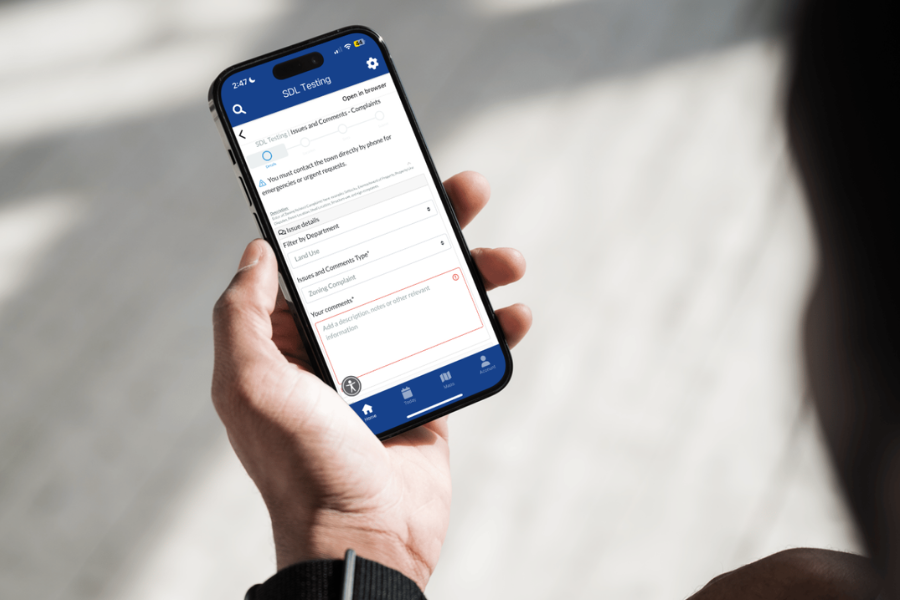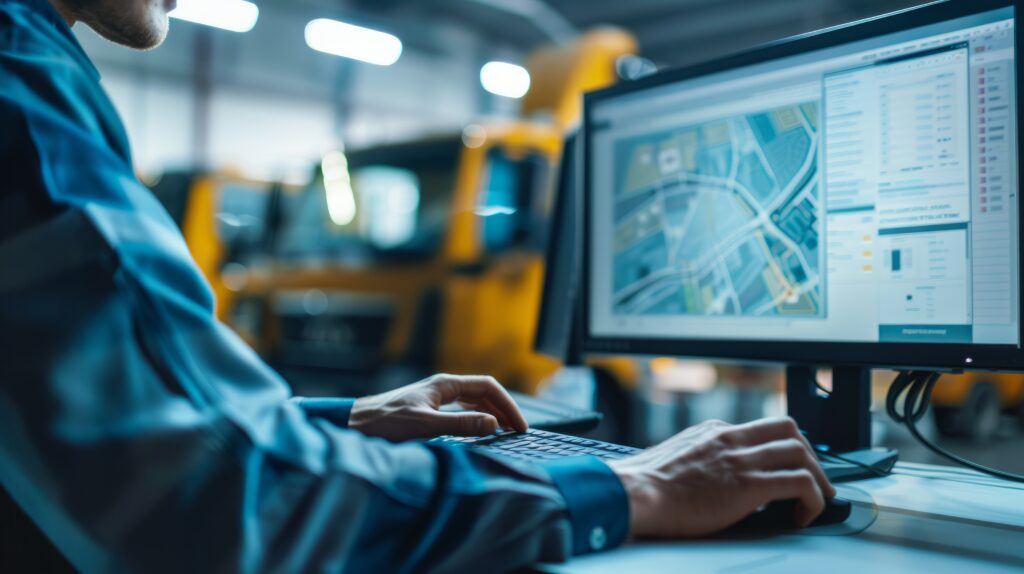Introduction: Embracing Digital Transformation in Municipal Operations

Municipalities today face increasing demands for efficiency, transparency, and citizen satisfaction. Outdated permitting and licensing processes can slow down operations, frustrate both staff and residents, and create administrative bottlenecks that hinder progress. Modern permitting and licensing software for municipalities offers a powerful solution by streamlining workflows, automating routine tasks, and facilitating better communication between government offices and the public.
In this guide, we explore how digital permitting solutions ranging from citizen portals and mobile inspections to online plan reviews and permit tracking systems are transforming municipal operations. By embracing these advanced technologies, cities can improve operational efficiency, reduce costs, and deliver better services to their communities. Whether you are responsible for city administration, building permitting software, or licensing software, understanding these digital tools is crucial for staying ahead in today’s fast-paced municipal environment.
Citizen Portals for Permitting
What Is a Citizen Portal?
A citizen portal is an online platform that enables residents and businesses to submit, track, and manage permit applications digitally. This platform replaces the need for physical visits and paper-based processes, offering a streamlined method for interacting with city services. By transitioning to a digital solution, municipalities can free up staff time and reduce errors associated with manual data entry.
For example, consider a city that integrates its citizen portal with robust permitting and licensing software. Homeowners and contractors can quickly submit building permit applications from any device at any time. This not only speeds up the approval process but also ensures that every application is recorded accurately, leading to a more organized system overall. The portal’s user-friendly design makes it simple for citizens to upload required documents and track the status of their permits, enhancing transparency and trust in the municipal process.

Furthermore, integrating a citizen portal with other government technology systems such as payment gateways and GIS mapping creates a seamless workflow for handling applications. Municipal staff can easily access and review submissions, while applicants receive real-time notifications on the progress of their permit requests. This digital approach is particularly beneficial for cities managing high volumes of permit applications, as it can significantly reduce backlogs and improve overall service delivery.
📌 Key Takeaway: A well-designed citizen portal streamlines the permitting process, reducing administrative burdens and enhancing the overall citizen experience by enabling 24/7 access and real-time updates.
Mobile and Remote Inspections
What Are Mobile and Remote Inspections?
Mobile and remote inspections are innovative approaches to traditional on-site evaluations, leveraging modern technology to improve efficiency and accuracy. Mobile inspections allow field inspectors to use tablets or smartphones to capture real-time data, document site conditions, and even upload photos directly into the system while still on location. This eliminates the need for paper-based checklists and post-inspection data entry, significantly speeding up the process.
Remote inspections take this innovation a step further by enabling virtual evaluations. In situations where a physical visit is not required or is logistically challenging, inspectors can use live video streaming, digital documentation, and remote collaboration tools to assess sites. This method not only saves time but also reduces costs related to travel and physical presence. For instance, a remote inspection might be used for preliminary assessments of large infrastructure projects, where the initial review can be conducted virtually before a full site visit is scheduled.

In practice, a municipality that adopts mobile inspection technology can see dramatic improvements in efficiency. Consider a scenario in which inspectors are dispatched with a mobile device preloaded with a customized inspection app. As they visit multiple sites throughout the day, they can instantly record observations, complete digital forms, and even flag issues for immediate follow-up. This rapid data capture not only shortens turnaround times for building permitting software but also enhances the overall accuracy of the inspections.
📌 Key Takeaway: Mobile and remote inspections provide municipalities with faster, more efficient ways to conduct evaluations, reducing manual data entry, cutting travel costs, and improving overall inspection accuracy.
Online Plan Reviews
What Is Online Plan Review?
Online plan review (OPR) systems revolutionize the traditional process of evaluating building and development plans. Instead of relying on paper-based submissions and manual reviews, digital plan review platforms allow city officials, architects, and contractors to submit and examine documents electronically. This not only accelerates the review process but also minimizes the potential for lost or misplaced paperwork.
An online plan review system enables multiple stakeholders to collaborate on a single digital platform. City officials can access submitted architectural blueprints, engineering documents, and permit applications from any location. This collaborative approach ensures that all departments such as zoning, environmental, and safety can simultaneously review the plans and provide feedback. For example, a municipality that adopted an online plan review process reported a reduction in approval times by as much as 50%, thereby fast-tracking development projects and boosting local economic activity.

Moreover, the digital nature of OPR systems ensures that every revision and comment is automatically saved, creating a comprehensive audit trail. This feature is particularly valuable for maintaining compliance with regulatory standards and for future reference during inspections or audits. Automated workflows within these systems also ensure that each step in the review process is completed in a timely manner, which helps prevent delays in the overall permitting process.
📌 Key Takeaway: Online plan reviews enhance collaboration, reduce processing times, and provide a secure, auditable trail of document revisions, thereby improving transparency and efficiency in municipal permitting processes.
Online Permit Tracking
Why Track Permits Online?
Online permit tracking systems offer a centralized platform for municipalities to manage and monitor the status of permit applications in real time. This digital solution transforms the way city officials handle permits, replacing traditional logbooks and manual status updates with an automated system that communicates progress seamlessly. The ability to track permits online is a game-changer for municipal operations, significantly reducing the administrative load on staff and increasing transparency for citizens.
Imagine a scenario where a city administration software integrates permit tracking with other permitting software features. Citizens can log in to see the current status of their permit applications, receive automated notifications of any changes, and even access historical data related to past permits. For municipal staff, this means less time spent on repetitive follow-up calls and more time dedicated to handling complex tasks that require human judgment. The online system also supports data analytics, allowing city managers to identify trends, monitor bottlenecks, and optimize workflows for continuous improvement.

Furthermore, online permit tracking promotes greater accountability within municipal departments. When every step of the permitting process is logged and accessible via a centralized dashboard, it becomes easier to pinpoint delays or inefficiencies. For example, if a particular permit consistently experiences extended processing times, data from the tracking system can help identify where the bottleneck occurs—whether it’s in the initial submission, during review, or in final approval. This insight is invaluable for making informed decisions about where to invest in additional resources or process improvements.
📌 Key Takeaway: Online permit tracking systems enhance efficiency and transparency by providing real-time updates, reducing manual follow-ups, and offering valuable insights into workflow performance across municipal departments.
Conclusion: Paving the Way for Successful Implementation
As local governments continue to face mounting pressures to modernize their operations, the benefits of adopting Permitting and Licensing Software for municipalities become increasingly clear. By leveraging advanced tools such as citizen portals, mobile and remote inspections, online plan reviews, and permit tracking systems, municipal leaders can transform their operations into efficient, data-driven environments that serve both staff and citizens effectively. The integration of these digital solutions not only streamlines administrative processes but also enhances transparency, improves service delivery, and supports smarter decision-making.
The transition to digital permitting software, whether it’s permitting software, city administration software, building permitting software, or licensing software, is not merely an upgrade of technology but a fundamental shift in how cities operate. Municipalities that invest in these modern tools stand to gain significant improvements in efficiency and cost savings, making them better equipped to meet the challenges of today’s fast-paced environment.

